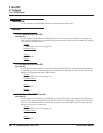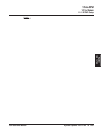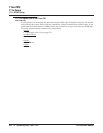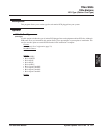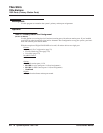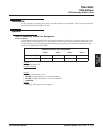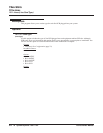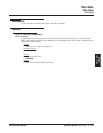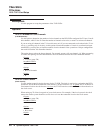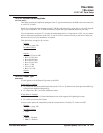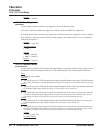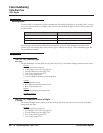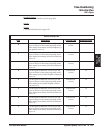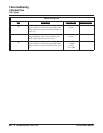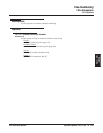
12xx-Slots
121x-Lines
1213-T1/E1 Card Setup
616 ◆ System Options: 1001-1702 DSX Software Manual
1213-T1/E1 Card Setup
Description
Use this program to set up the parameters of the T1/E1 PCBs.
Options
1213-01: Number of PCM Channels
(# PCM Channels)
Use this option to determine the number of active channels on the PCB. PCBs configured for T1 have 24 avail-
able channels, while E1 has 30. Enter the number of channels to be active, or enter 0 to activate all channels.
If you are using all channels in the T1, leave this entry at 0. If you are connected to a fractional telco T1 cir-
cuit (e.g., providing only 8 circuits), set this option to match the number of circuits in your fractional span.
Additionally, you may have to limit the number of active channels if the system has a unique configuration
that could exceed the 119 allowable timeslots.
This option always selects the lowest channels. For example, an entry of 8 uses channels 1-8. When connecting
to a DSU and splitting voice and data channels, the voice channels must be the lower-numbered channels.
Features
• T1 Lines (page 338)
IntraMail Features
• None
Options
• 1-30
• 0 for all channels
Default
• 0
1213-02: Clock Control
(Clock Control)
Use this option to specify the clock source for the T1 PCB. The clock is required to synchronize the PCB’s
operations. The PCB can be either the clock master (1) or the clock slave (2). As master, the T1 PCB uses its
own internal clock as the clock source. As slave, the T1 PCB uses the connected T1 circuit from the telco as
the clock source.
When setting up Tie Lines, keep track of your clock sources. For example, if the local system is the clock
master, the remote system should be set for slave so it uses the connected circuit as the clock source.
Features
• T1 Lines (page 338)
IntraMail Features
• None
Options
•1 for master
• 2 for slave
Default
• 1



